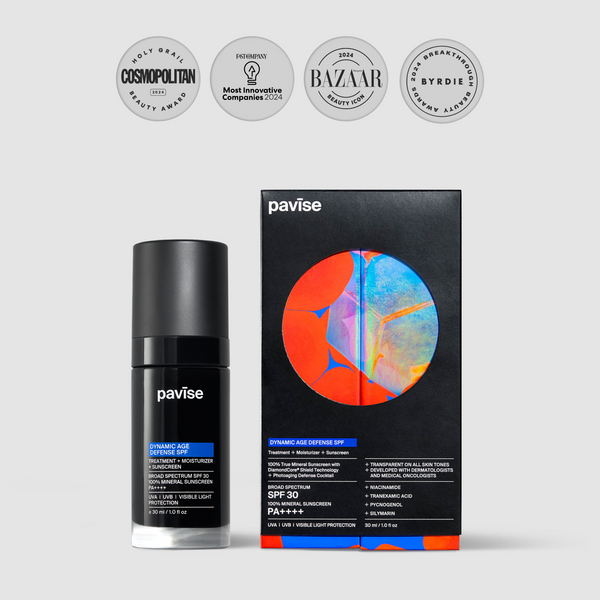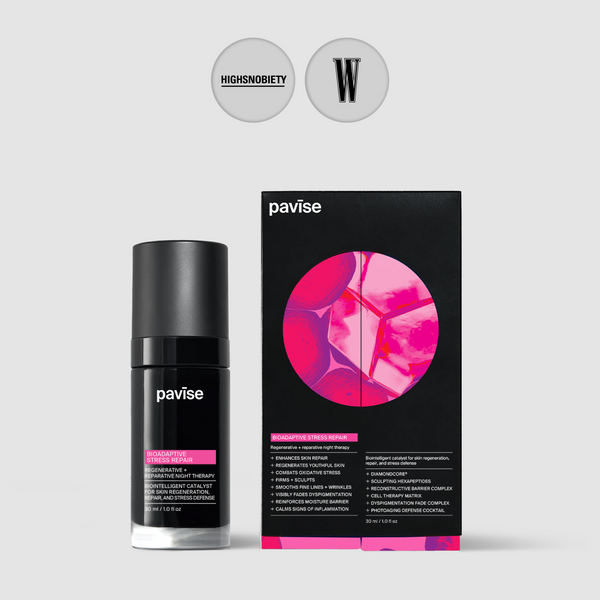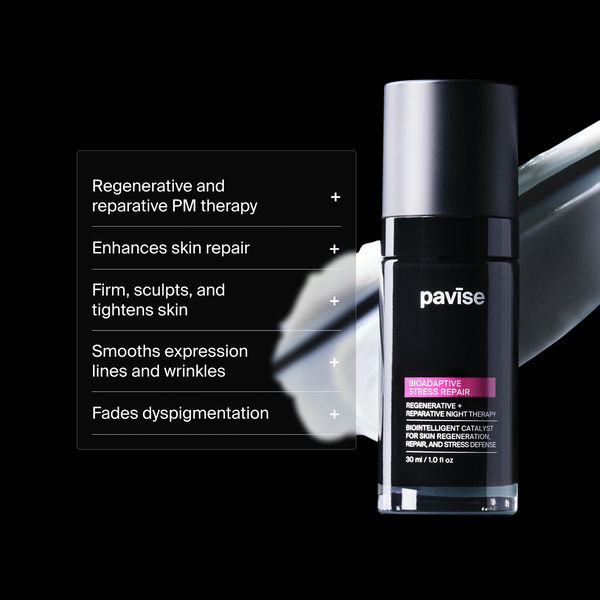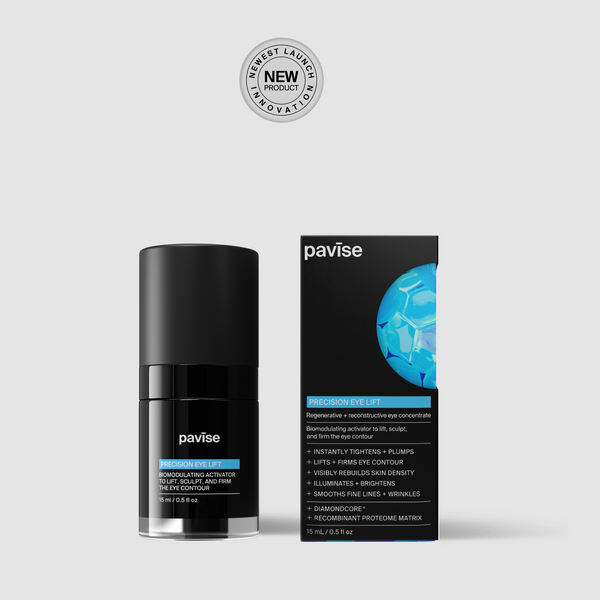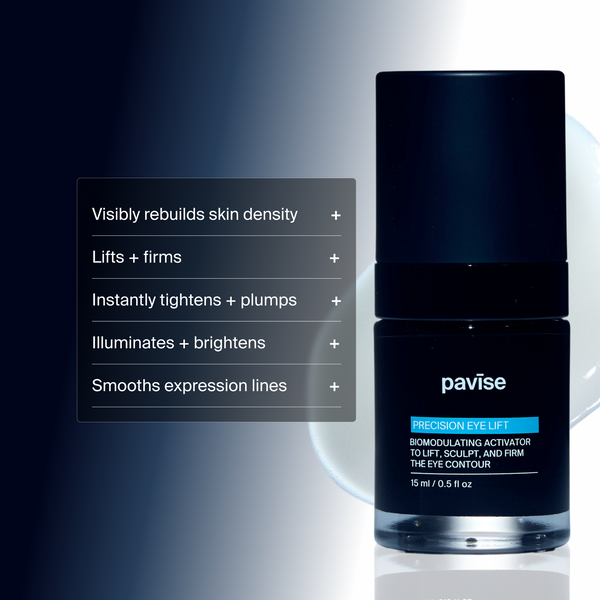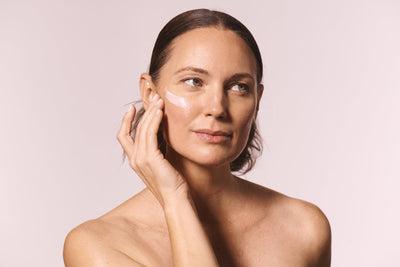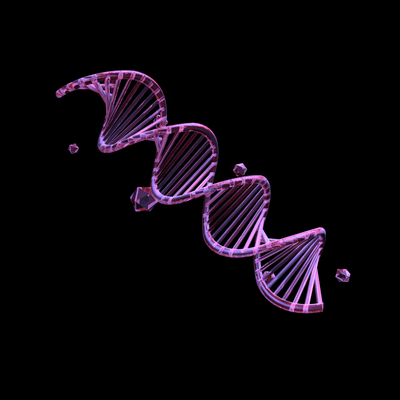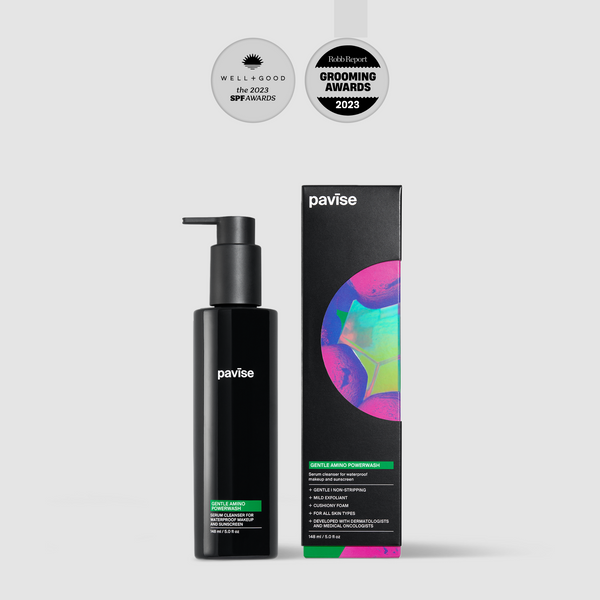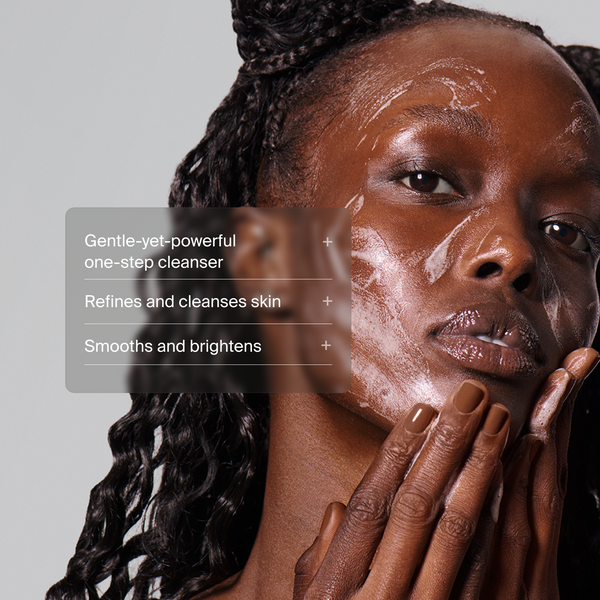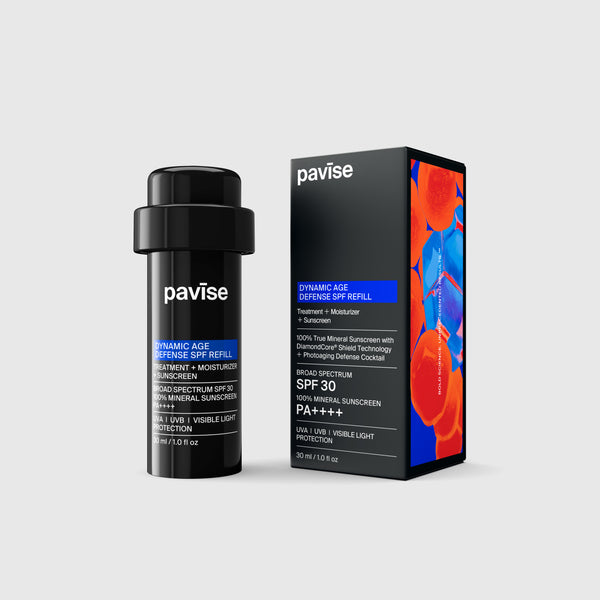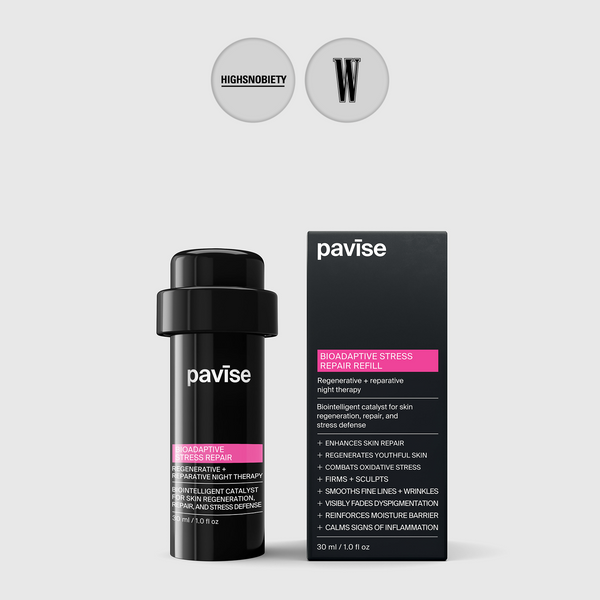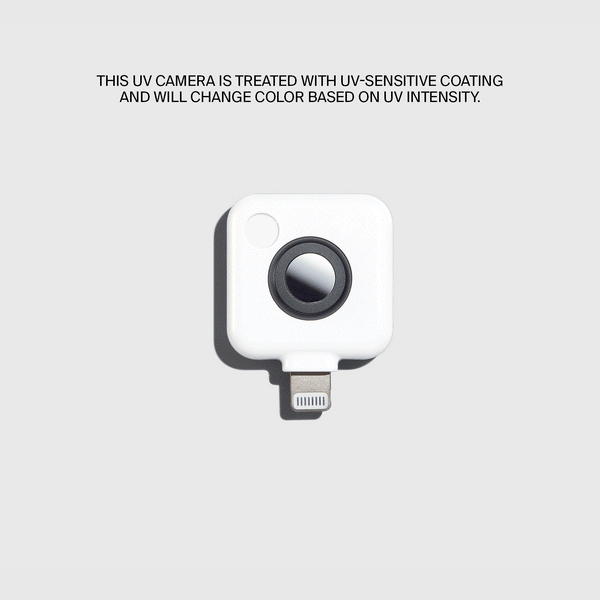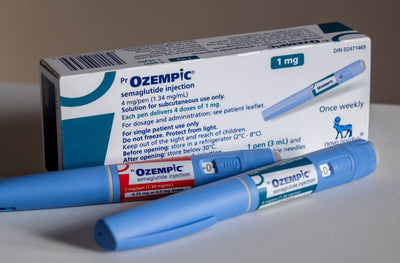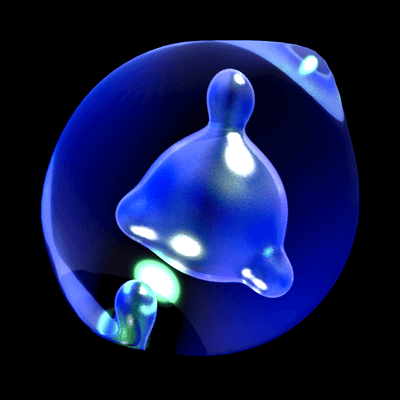THE FACTS AROUND EYE AGING
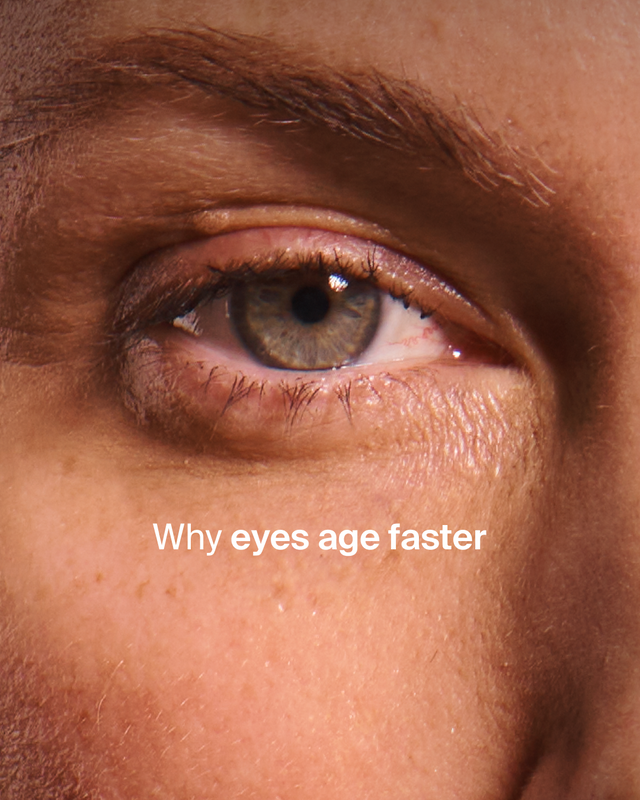
What you need to know
The skin around the eyes is uniquely thin and fragile, making it especially vulnerable to both natural cellular changes and external stressors like UV exposure. Over time, this leads to wrinkles, sagging, puffiness, and dark circles that can make the area appear older than the rest of the face. These changes stem from processes such as collagen breakdown, fat redistribution, and oxidative damage, which weaken the skin’s underlying support structure.
By addressing these root causes with antioxidants, growth factors, and structural protein support, it is possible to restore firmness, reduce pigmentation, and revive the eye area’s youthful appearance.
The eyes are often the first place we notice the passage of time. Fine lines, puffiness, and dark circles can quietly appear, sometimes making us look more tired or older than we actually feel. Unlike other areas of the face, the skin around the eyes is exceptionally thin and delicate, which makes it more vulnerable to both natural aging processes and external stressors like UV exposure. Understanding why this happens, and how we can care for this sensitive area, reveals that aging around the eyes is not just inevitable; it is something we can influence. By looking at both the science behind these changes and the solutions that work at a deeper level, we can find effective ways to keep the eye area looking bright, lifted, and youthful.
What causes aging around the eye?
Skin aging that occurs around the eye is one of the most prominent forms of aging simply because of how noticeable our eyes are and because our face is subjected to a lot of exposure to our environment. This leaves us susceptible to both intrinsic and extrinsic forms of aging around our eyes.
We experience intrinsic aging primarily due to cellular senescence, the state of permanent growth arrest that our cells experience1. Senescent cells behave differently than normal, healthy cells which causes a change in protein expression. As we age, senescent cells accumulate in our skin, leading to changes in the extracellular matrix (ECM) which supports our skin elasticity and hydration1. Collagen and elastin are some of the main structural proteins in the ECM, and they are crucial to elasticity maintenance1. As we age, these proteins get degraded due to the changes in our cells, resulting in a lack of elasticity which is very noticeable around our eyes.
In addition to intrinsic aging, we also experience extrinsic factors that accelerate aging. UV exposure, or photoaging, is one of the most damaging forms of extrinsic aging because we are exposed to the sun every day. There are two different wavelengths of UV that cause damage: UVA and UVB. UVB is what causes the surface level damage that we see such as sunburn and inflammation. UVA penetrates into deeper skin layers, causing permanent aging damage that appears later in life. When exposed to UV, free radicals known as reactive oxygen species (ROS) are produced2. ROS exist naturally in our body, but when there are too many, they can cause reactions that damage our cells and DNA. This is another pathway that can lead to senescence and cause an upregulation of degrading proteins that lead to wrinkles and hyperpigmentation2.
How does eye aging present itself?
With all of these aging symptoms appearing, it is not surprising that aging around the eye presents itself in multiple ways. The skin around our eye experiences wrinkling, sagging, thinning, and darkening, all of which show signs of aging. Our eyes age faster than the rest of our skin, sometimes appearing 22 years older than the rest of our skin simply because the skin in the area is thinner and contains less structural proteins. Here are a few of the ways that eye aging symptoms appear:

Crow’s feet are the wrinkles that appear at the corners of our eyes. Years of smiling and creasing our skin around that area leads to that spot being one of the first and most prominent locations of wrinkling3. Additionally, there is less collagen in this area, causing the skin to wrinkle more easily and noticeably. This makes the eye area appear older because the wrinkles that form are more deep set and obvious.
Sagging of the upper eyelid occurs due to the loss in elasticity as the collagen becomes more degraded3. Loss of support from the ECM allows gravity to do the work and the upper eyelid becomes more hooded over the eye. There is also less fat in the area which removes any additional structural support of the skin. When the already low collagen levels decrease any further, there is nothing left to support the eyelid, so the skin begins to sag more.
Puffiness and undereye bags appear due to the change in facial fat that we experience3. With age, the fat in our face also migrates and changes how it presents, and one of the most prominent changes is the accumulation of fat under our eyes. The undereye area is also more susceptible to fluid retention, so with the fat changes, fluid moves around as well. This leads to more prominent eye bags.
Dark circles under the eyes appear as well from sun exposure, and skin thinning makes them more prominent3. Some people are also more genetically predisposed to have dark circles, but they can become more prominent with age as we experience dermal thinning. For those that are not genetically predisposed to having dark circles, they can still appear due to hyperpigmentation that forms from sun exposure or even just rubbing the eyes too much leading to excessive blood flow to the area. With aging, the loss of fat and dermal thinning causes the blood vessels to appear darker. All of these causes lead to different types of dark circles, and they can make them appear differently as well, so it is important to be educated on what type you may have to combat it.

How can eye aging be treated?
The way to combat all of these symptoms is to reduce oxidative damage, improve ECM structure, and eliminate pigmentation. All of this can be done with topical treatments, and our recommended treatment is the Pavise Precision Eye Lift which contains ingredients that lift and firm the skin around the eyes. The two main ingredients in PEL are DiamondCore® and a Recombinant Proteome Matrix.
DiamondCore® is responsible for reversing signs of aging by scavenging damaging ROS and promoting collagen synthesis. It has been proven that the DiamondCore® molecule, ND-ZnO, improves collagen synthesis by 70% in comparison to other antiaging treatments4. This reduces the wrinkling and dermal thinning seen around the eyes which can improve symptoms such as crow’s feet or sagging.

DiamondCore® also improves penetration of the Recombinant Proteome Matrix into the skin. The proteome matrix contains growth factors and peptides that also promote collagen and elastin synthesis, as well as other ECM structural proteins that allows for firming and sculpting of the skin around the eye. In as little as 15 minutes, there is a noticeable improvement in wrinkles and sagging. Use PEL for 4 weeks, and there is increased improvement in firmness, dark circles, and expression lines.


The skin around our eyes is one of the most delicate areas of the face, and it shows changes faster than anywhere else. That is why supporting this area takes more than just hydration or quick fixes, it requires addressing the deeper processes that drive visible aging. By focusing on rebuilding the skin’s foundation, protecting it from ongoing stress, and encouraging renewal at the cellular level, it is possible to restore brightness and firmness where it matters most. Treatments like Pavise Precision Eye Lift are designed with this in mind, pairing powerful antioxidants with advanced proteins to lift, smooth, and strengthen the eye area. With consistent care, the eyes can continue to reflect energy and vitality, rather than fatigue or age.
References
1. Yaar M, Eller MS, Gilchrest BA. Fifty Years of Skin Aging. Journal of Investigative Dermatology Symposium Proceedings. 2002;7(1):51-58. doi:https://doi.org/10.1046/j.1523-1747.2002.19636.x
2. Hussen NH amin, Abdulla SK, Ali NM, Ahmed VA, Hasan AH, Qadir EE. Role of antioxidants in skin aging and the molecular mechanism of ROS: A comprehensive review. Aspects of Molecular Medicine. 2025;5:100063. doi:https://doi.org/10.1016/j.amolm.2025.100063
3. Love LP, Farrior EH. Periocular Anatomy and Aging. Facial Plastic Surgery Clinics of North America. 2010;18(3):411-417. doi:https://doi.org/10.1016/j.fsc.2010.05.001
4. Zhang XD, Teng C, Bai X, et al. Enhanced skin regeneration and therapeutic delivery using novel diamond‐augmented zinc oxide. Journal of Cosmetic Dermatology. Published online July 31, 2024. doi:https://doi.org/10.1111/jocd.16508
By Elia Rodriguez - Updated September 24, 2025
